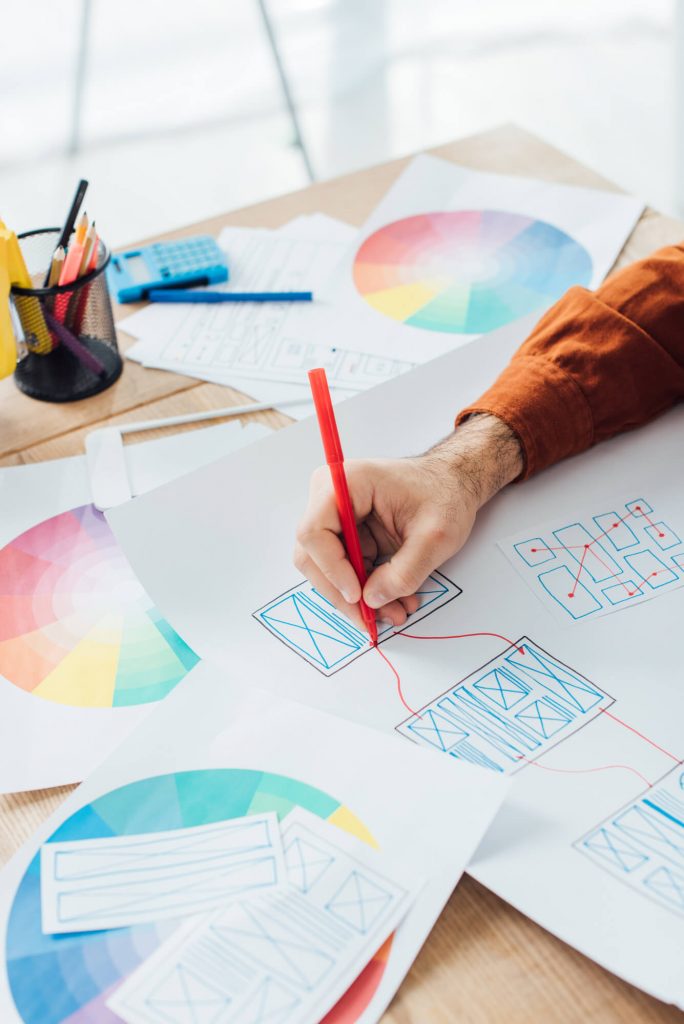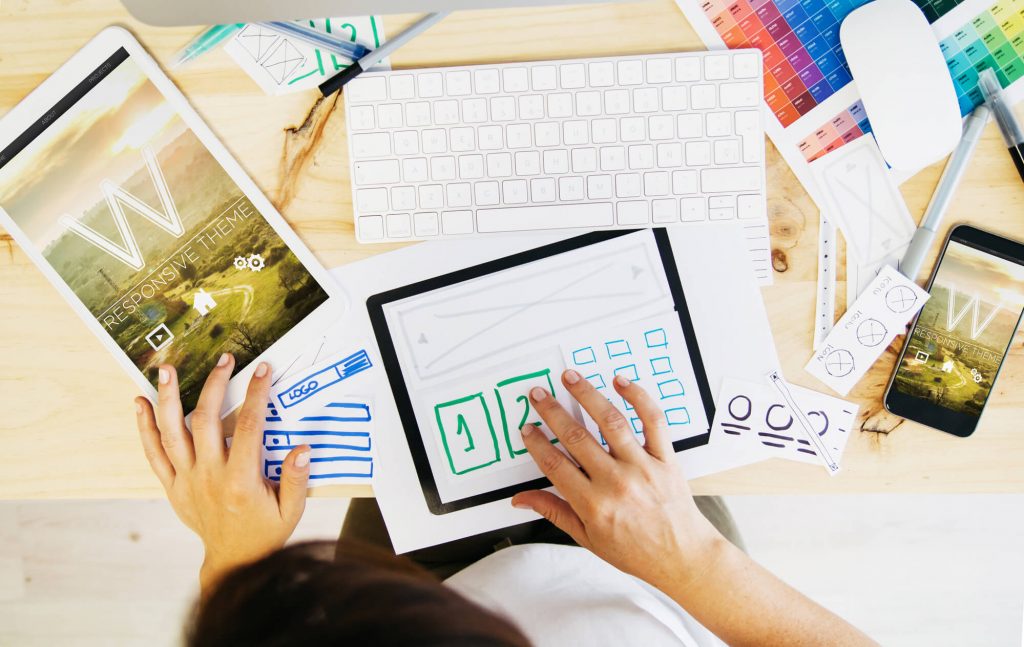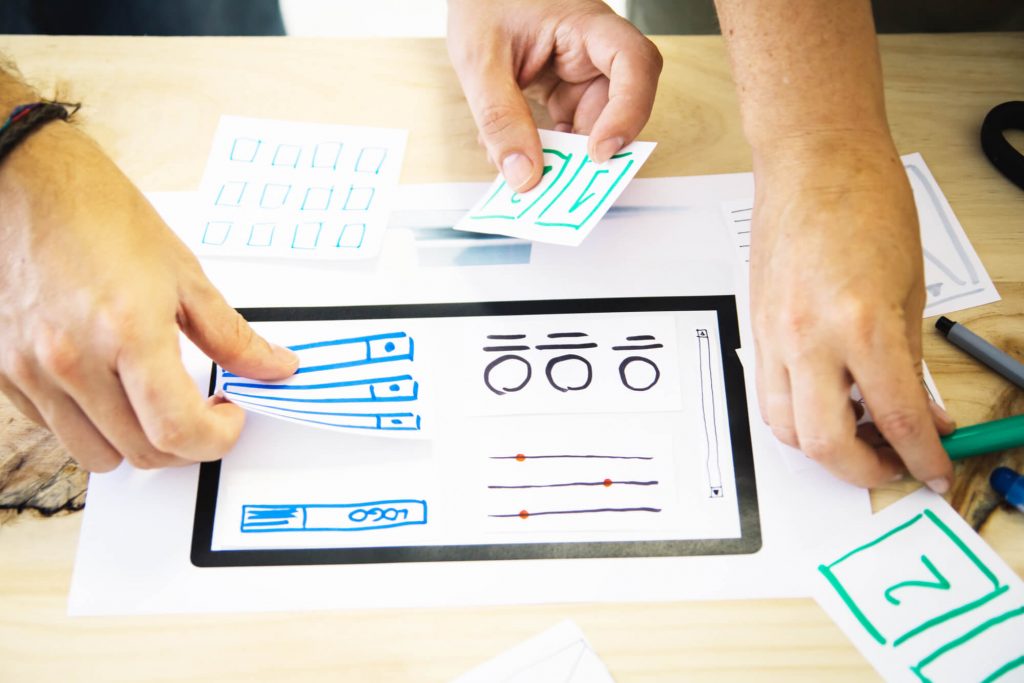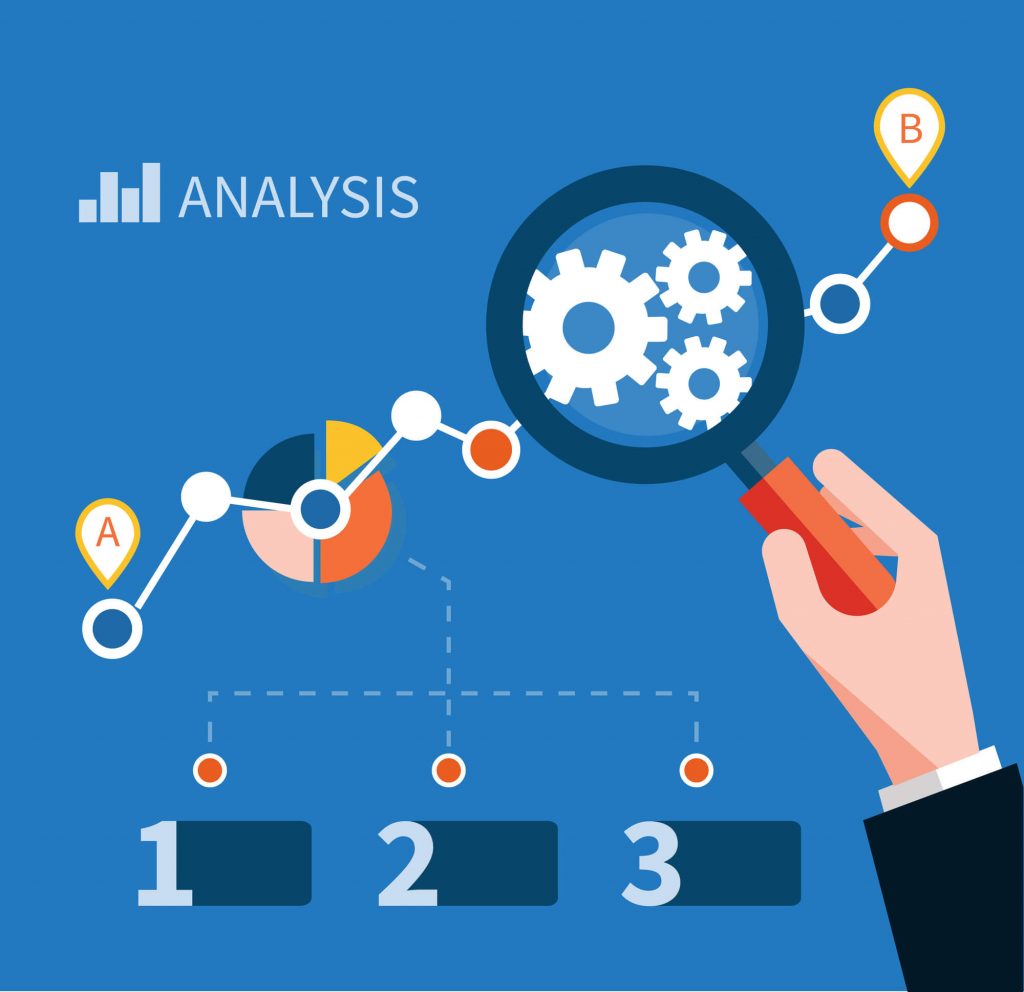This article is a guide to the world of UX design process. It’ll help you create a product that is more likely to find its user and take its place in the market.
What is UI design about?

Caption
Both UI and UX designers create interactions. UI designers can be considered the creators of micro interactions, specializing in details, and UX designers are considered architects of macro interactions. At first glance, this is a small difference, but it is very important to realize it.
UX design covers all aspects of personal experience arising from interaction with the system, including graphics, interface, physical interaction, etc. But with the increasing speed of technological progress, this concept has increased in scale, and now covers even many aspects of business development, and is still expanding. This is a normal process for any successful event.
User experience design can be defined as perceptions and responses arising from the use or intended use of a site or application.
This is aimed at making the experience of working with the product as attractive as possible for retaining and attracting as many consumers as possible. In simple words, if you want your users to stay with you, then you are reading the correct article.
When a user scrolls a website, the task of UX is to send it from the home page to purchase a product or perform a targeted action. In other words, convert. This is a difficult task. There are no guarantees in this matter, but there is a possibility. Of course, the goal is to increase the likelihood of a purchase, subscription, or registration. For all this, there are different ways to achieve it, but they all fit in with UX design.
Who is a UX Designer?

Let’s talk about a UX designer. Users will not visit sites and use services that they find uncomfortable. This is obvious, but still every year more and more inconvenient sites appear. To gain a competitive advantage, you need to have a good understanding of user interface design.
More and more startups and well-known companies are allocating huge budgets for user experience. Did you know that during the first year, Amazon invested 100 times more in UX than in advertising. But this suggests that this step was taken for a reason. Large companies are able to predict trends. And we are talking not only about trends related to fashion, but also business trends. Amazon acted as the guarantor that this sphere is reliable and it will develop. So is there any doubt in this medium and small business?
So, you urgently need to become a user experience designer? Or hire him? These professionals are among the top 25 highest paid professionals in the US market. The salary of UX-designers in the world is $ 60 thousand per year, in the USA it is more than $ 100 thousand. The incredible popularity of the profession is also due to the fact that for a dynamic highly competitive IT market, user experience has become the key to the development of any company. Therefore, interest in this area is unlikely to disappear in the coming years. Most likely it will continue to develop at an incredible pace.
A plan is what helps to succeed
Of course, in order to act, you need to know exactly what you are going to do. To get started, set a goal. Roughly determine how much time you can achieve it. Think about what steps you need to take to do this. And you ask, what’s next? And then you need to follow the points that we will describe below.
Here is a list of items that you need to follow. This will help you succeed. A structured approach in any business is a guarantee of quality and especially if you want to turn your company into a brand. Here are the points of this approach:
- Research
- Ideate
- Prototype
- Build
- Analyze
Now we need to focus on each of these points. Find out the key points. Present your project at each of these stages. And much more. This will help to avoid many mistakes that take both time and energy. When we talk about a user experimenter, we always mean convenience. And this is the first association that appears in many people. And that already says a lot, isn’t it?
Point 1. Research

As you already understood, this is the first stage of user experience design. The goal of this phase is to determine the needs of our users and also to know our business goals. In addition, we still need to check our conclusion. Is this really so, or do we just want to think that way? We need to consider many factors. Not all factors can be predicted. And yet, those that can be predicted must be factored into your plan.
Then you need to see what your competitors are offering in this area. Identify their flaws. Consider this carefully. Does your plan have similar flaws? Think about how you could avoid this. In other words, UX is the experience that the client receives from working with the interface. Therefore, you should consider as many potential flaws as possible and prevent them.
The main goal of user experience research is to animate the design process from the perspective of the end user. It is research that prevents us from creating anything for ourselves. A site or application created with user care in mind is becoming the most popular.
Typically, a UX research consists of two parts: data collection, and their generalization. Generalization will improve usability. At the beginning of the project, design research focuses on studying the details, that is, what and who needs the project in general, as well as studying the needs and goals of end users.
UX researchers will conduct surveys, collect research, look at potential or current users, and view literature, data, or analytics. Then iteratively, in the design process, the focus of user experience research will shift towards practicality and sensuality. Researchers can conduct usability tests, interview users about the process, and, most importantly, test assumptions that will improve design.
Point 2. Ideate
You need to make a list of ideas to address these very shortcomings. Experiment with Site Flow and User Flow. At the end, make the first simplified sketches of the future project. If in the previous paragraph you were just trying to predict this, now all this should take the form of a plan from which it is not advisable to backtrack. Nevertheless, your main task at this stage is the generation of ideas.
Use different methods to help you show a little more creativity. Brainstorm and Worst Possible Idea are usually used to stimulate free thinking and expand the problem space, which is very necessary at this stage. It’s important to get as many ideas or solutions as possible at the beginning of this step. You should choose some other idea methods at the end of this step to help you research and test your ideas and find the best way to solve the problem, or provide the elements needed to work around the problem.
This is a very creative work, which is not suitable for everyone. Of course, if you have the opportunity to surround yourself with specialists, then you need to do this. This will help you adopt a rewarding experience. But if you do not have such an opportunity, then you can contact our specialists at any minute and get feedback. We’ll help you go through all the stages of UX design development.
Our employees have a lot of experience in this area. You can entrust us with your project. Moreover, you must do this if you do not want to take risks. We work with clients in such a way that you can at any time find out what stage your project is at. You can ask your questions and really get an answer to them. The choice is yours only, take the risk, doing it yourself, or get an excellent result with our help.
Step 3. Prototype

The target of this step is to design the wireframes. You must provide what kind of product you get. You need to see it, to work with it further, to develop it, improve, and find flaws.
That’s why you need to create prototypes. Test results on users. Collect the data in the form of reviews, statistics or surveys. On the basis of the information collected, you need to fix the discovered flaws of your project.
By observing how real users work with your product or prototype, you can confirm your hypotheses and improve your user experience. And although the main task of testing is to collect high-quality feedback, it can be strengthened with high-quality answers to questions.
Prototypes can be shared and tested in the team itself, in other departments, or in a small group of people outside the development team. This is an experimental stage, and its purpose is to determine the best possible solution for each of the problems identified in the first three stages.
In order not to invest energy and money in a project that the user does not need, start by understanding his goals and problems. Does your project solve user problems? how exactly does this solve his problems? Is this solution unique? If the solution is not unique, who else solves these problems and how? Answers to these questions will explain to you all the motives of users.
At this stage, you can still afford to make mistakes, you can allow yourself to make inaccuracies. Now you can still fix it or hope to notice it and fix it later. But when you move on to the next stage, everything will become much more serious and the work will require more responsibility. Let’s move on to the next point to understand what is at stake.
Step 4. Build
We create the final design. We send the project to production to the programmers. It is important to note that the five steps are not always sequential – they do not necessarily follow any particular order, and they can often occur in parallel and repeat iteratively. Thus, the steps should be perceived as different modes that contribute to the project. Therefore, it is important to understand that these points can be swapped. Some points can be given less time, and others more. It all depends specifically on your project. It also provides basic information that will become the basis for any of your user experience project.
Create your product. Test it out. Think not about yourself, but about users. This is what is called user experience design development.
Point 5. Analyze

Gather information about the work of your project. Learn analytics. Take time to read reviews. Typically, the client already knows what the product will include and what specific functions it will perform. Nevertheless, as you know for this article, it’ll be useful to conduct a detailed analysis of the top 3-4 competitors, determine what features they have, be inspired by them and come up with something unique for your product. Customers always like it when their product stands out from the competition. By the way, during the analysis of competitors, you can print screenshots of their products and put them on the table, attach to the board. Thus, it’ll be more convenient to see the overall picture of the products.
But if you did an analysis of competitors before, then at this stage you need to focus on analyzing how your product turned out. It is not always as simple as it sounds. Spend time on this. This is a serious task. You have the opportunity to change something in your product. Then you can do it too, but this may already have consequences. Therefore, analyze the result at this stage.
User experience design analysis, as a rule, is carried out with colleagues or with the project team. Analysis helps to understand what dictated certain design decisions and relate them to business goals.
These simple questions will help you understand how to analyze a product when we talk about UX:
- What problem does this screen solve?
- Why is it here?
- How did you come to this decision?
- Why did you decide to show it?
- Can we clean something?
- What does a simplified version of this screen look like?
Use it to make your analyze more productive.
What else is worth remembering in the final UX development?
Of course, about the Style Guide. Here, too, it depends on the budget and on how we agree with the client initially. Not all customers want to spend money on developing a Style Guide. Nevertheless, this is a very important final stage when developing a new product or re-designing an existing one. At a minimum, the Style Guide should contain the following elements: product logo, company colors, fonts, valid and invalid options for converting and using elements, rules for processing documents, promotional items, etc.
Bottom line
As you probably already understood, the ideal user experience process for all products doesn’t exist. It varies from project to project, complemented by something new. It is very important to analyze the process and approach to the implementation of work after the completion of each project, to do the work on errors. I would be glad if you share your experience in the comments.
Remember that good design is more than just a decision-making process. This ability to understand the problem is so good that the solution is obvious.


